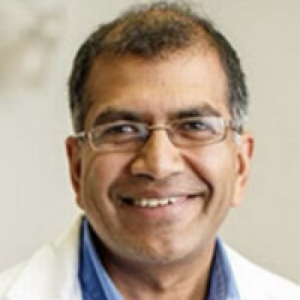While internal medicine may not possess the same flashy allure as other specialties, such as surgery or dermatology, it is an extraordinary choice for those dedicated to comprehensive patient care. Internists are often seen as detectives of medicine, focusing on the intricate details of patient health and the interplay of multifaceted conditions. “ What I love about internal medicine is the breadth, holistic, comprehensive care you provide to a wide rate of patients.,” says Dr. Sharad Jain, associate dean for students and a professor of medicine at the UC Davis School of Medicine.
This specialty allows for profound relationships with patients, as internists frequently serve as their primary care providers, managing chronic illnesses and guiding patients through complex health journeys. The opportunity to impact a patient’s life through meticulous diagnostic work and long-term management is particularly rewarding.
One of the key advantages of pursuing a career in internal medicine is the vast array of specialties and subspecialties available, which allows internists to tailor their practice to match their interests and strengths. From cardiology and endocrinology to infectious diseases and rheumatology, the options are diverse and cater to various facets of patient care. “In addition to the clinical care, internal medicine opens up a range of possibilities of leadership roles. When you look at the range of what internists do, it is incredibly broad, with lots of opportunities available to those who practice in this area,” says Dr. Jain.
Keep reading to learn more about the specialties and subspecialties options in internal medicine and Dr. Jain’s advice for students considering this field.
Meet the Expert: Sharad Jain, MD

Dr. Sharad Jain is the associate dean for students and a professor of medicine at the UC Davis School of Medicine. He oversees all aspects of the student experience, including academic advising, wellness, and professional development.
Before joining UC Davis, Dr. Jain was a professor of medicine at the UC San Francisco School of Medicine, where he directed the primary care medicine residency program based at Zuckerberg San Francisco General Hospital. He also served as an advisory college mentor at the medical school.
Dr. Jain is committed to ensuring student success in medical school, fostering an inclusive and supportive learning environment, and teaching about vulnerable populations. He practices general internal medicine at the Sacramento County Clinic, where he sees patients and supervises medical residents.
Internal Medicine is Complex Care
As with all specialties, internal medicine has its own unique set of challenges and rewards. What sets it apart is the focus on comprehensive and ongoing patient care, from preventive medicine to managing complex chronic conditions. Internists often serve as the primary care providers for their patients, meaning they are responsible for coordinating various aspects of a person’s health and working closely with other specialists when needed.
“The broad training of internal medicine helps us be providers that can take care of multi-system that can be complex issues. We are generalists, either in the inpatient setting as hospitalists or in the primary care setting,” says Dr. Jain. “A subset of internal medicine physicians will decide to specialize, so they complete additional training to have expertise in cardiology, gastroenterology, pulmonary medicine, etc.”
The depth and breadth of this field prepare physicians for any future endeavor. “A good thing about internal medicine, for somebody who’s considering the field, is that there’s a range of opportunities available. You don’t have to decide until they get there. You still get that foundational training, and then, after your residency, you can decide which direction you want to go,” explains Dr. Jain.
Internal medicine physicians without specialization or subspecialization have the least education and residency requirements. “The residency for internal medicine is three years. So you do four years of medical school and then three years of internal medicine. After that, you decide if you want to subspecialize, and in which case you will apply to fellowship programs and complete an additional year,” says Dr. Jain. “When I think about our residency program, probably half of them will stop after three years and work in the inpatient or the outpatient setting. The other half will decide to pursue additional training to have that sort of expertise in the subspecialty area.”
Advice To Students Considering Internal Medicine
For students considering a career in internal medicine, Dr. Jain has some key advice: “What is so special about internal medicine is just the range of opportunities available. It’s for people who really want to do longitudinal, comprehensive outpatient care. It’s for people who like the intensity of the inpatient setting. It’s people who want to have a procedural focus in fields like cardiology or gastroenterology,” he says.
He continues,” The beauty of internal medicine is that you learn about the complexity of all these systems and how they intersect in medical illness. Then, you can decide which area you want to focus in as you get further along in your training. I tell students that it’s it sets you up for a lot of different career opportunities that they can decide on as they progressthrough their residency training.”
In addition to the array of specialties and subspecialties, internal medicine also offers the opportunity for leadership roles, research projects, and community involvement. This diverse range of options allows physicians to continuously grow and adapt their careers to match their interests. “This is field where you can decide later on how you want to apply your training to whatever setting is most appropriate and interesting to you,” Dr. Jain encourages.
Internal Medicine Physician With A Speciality or Subspeciality Vs a Specialist
Internal medicine physicians with a specialty or subspecialty possess a unique blend of broad medical knowledge and focused expertise. This dual capability allows them to manage complex patient cases while also addressing specific health issues that require advanced training. “When internal medicine physicians specialize, that really becomes the focus of their practice,” says Dr. Jain. “A cardiologist may do some level of primary care, but they’re really focused on the heart. They are caring for patients with cardiology problems. They may be doing procedures to check the anatomy of the heart. That is their entire focus.”
On the other hand, an internal medicine doctor with a speciality in cardiology not only treats heart-related conditions but also understands how these conditions may influence or be influenced by other systemic health issues, such as diabetes or hypertension. This comprehensive approach is essential in today’s healthcare landscape, where patients often present with multiple comorbidities. As such, these specialists are equipped to provide targeted care while maintaining a holistic perspective on their patients’ overall health.
Trends in Internal Medicine
The field of internal medicine is continuously evolving to meet the changing needs of patients and society. “The most significant change I have seen has been the advent of the hospitalist model that started in the late 1990s,” notes Dr. Jain. “In the old days, a generalist took care of patients on both sides of the street, in the clinic and the hospital. Then, the complexity of patient care began to increase and it became hard to do both well. And now, a lot of our graduates are interested in hospital medicine because they like the acuity and they like the shift work. It just appeals to a lot of young physicians who are starting their career.”
Other notable trends in recent years include an increasing focus on preventive care and lifestyle medicine. Physicians are recognizing the importance of addressing lifestyle factors such as diet, exercise, and stress management as part of overall patient health. There is also a growing use of telemedicine, particularly in light of the Covid-19 pandemic. Internal medicine doctors have adapted to virtual visits and consultations to continue providing vital health services while minimizing potential exposure risks for both patients and providers.
Lastly, there has been a push towards more collaborative and team-based approaches to patient care. This includes working closely with other healthcare professionals, such as nurses, physician assistants, and pharmacists, to provide comprehensive and coordinated care for patients.
Specialty and Subspecialty Options in Internal Medicine
Here is a list of specialty and subspecialty options for internal medicine physicians:
- Adolescent Medicine: Focuses on the care of patients who are in the adolescent period of development, typically ranging from the last years of elementary school until after high school.
- Adult Congenital Heart Disease: Specializes in the treatment of adults who were born with heart defects, often requiring ongoing care and monitoring.
- Advanced Heart Failure and Transplant Cardiology: Deals with the management of severe heart failure and the evaluation and care of patients before and after heart transplants.
- Cardiovascular Disease: Encompasses the diagnosis and treatment of conditions related to the heart and blood vessels.
- Clinical Cardiac Electrophysiology: Focuses on diagnosing and treating the electrical activities of the heart, including arrhythmias.
- Critical Care Medicine: Provides specialized care for patients with life-threatening conditions requiring comprehensive monitoring and intervention.
- Endocrinology, Diabetes, and Metabolism: Involves diagnosing and treating disorders of the endocrine system, including diabetes and metabolic imbalances.
- Gastroenterology: Concentrates on the diagnosis and treatment of digestive system disorders, including the stomach, intestines, and related organs.
- Geriatric Medicine: Focuses on healthcare for the elderly, addressing complex medical and psychosocial issues.
- Hematology: Concerns the diagnosis and treatment of blood disorders affecting the blood and bone marrow.
- Hematology and Medical Oncology: Combines the treatment of blood disorders with cancer care and management.
- Infectious Disease: Specializes in diagnosing and treating complex infections caused by bacteria, viruses, fungi, and parasites.
- Interventional Cardiology: Involves minimally invasive procedures to treat cardiovascular diseases, such as angioplasty and stenting.
- Medical Oncology: Focuses on the treatment of cancer using chemotherapy, hormonal therapy, biological therapy, and targeted therapy.
- Nephrology: Deals with diagnosing and managing kidney diseases and related dialysis treatments.
- Neurocritical Care: Provides specialized care for patients with severe, life-threatening neurological conditions, such as brain injuries or strokes.
- Pulmonary Disease: Involves diagnosing and treating lung and respiratory disorders, such as asthma and chronic obstructive pulmonary disease (COPD).
- Pulmonary Disease and Critical Care Medicine: Combines the treatment of respiratory conditions with critical care for life-threatening illnesses.
- Rheumatology: Specializes in diagnosing and treating rheumatic diseases, including arthritis and autoimmune conditions.
- Sports Medicine: Focuses on the treatment and prevention of sports-related injuries and the enhancement of athletic performance.
- Transplant Hepatology: Involves the care of patients before and after liver transplantation, managing liver disease and complications.

Kimmy Gustafson
WriterAt HealthcareDegree.com, Kimmy Gustafson has delivered in-depth and insightful articles since 2019, aiding prospective students to navigate the complexities of choosing the right healthcare degree. Her recent work includes topics such as the ethics of gene editing and physician assistant’s fight for autonomy.
Kimmy has been a freelance writer for more than a decade, writing hundreds of articles on a wide variety of topics such as startups, nonprofits, healthcare, kiteboarding, the outdoors, and higher education. She is passionate about seeing the world and has traveled to over 27 countries. She holds a bachelor’s degree in journalism from the University of Oregon. When not working, she can be found outdoors, parenting, kiteboarding, or cooking.